
Do you have a question about the Samsung Galaxy S4 SGH-M919 T-Mobile and is the answer not in the manual?
| Network Technology | GSM / HSPA / LTE |
|---|---|
| 2G bands | GSM 850 / 900 / 1800 / 1900 |
| 3G bands | HSDPA 850 / 1700 / 1900 / 2100 |
| 4G bands | LTE band 4(1700/2100), 17(700) |
| Speed | HSPA 42.2/5.76 Mbps, LTE Cat3 100/50 Mbps |
| GPRS | Yes |
| EDGE | Yes |
| Announced | 2013, March |
| Status | Available. Released 2013, April |
| Dimensions | 136.6 x 69.8 x 7.9 mm (5.38 x 2.75 x 0.31 in) |
| Weight | 130 g (4.59 oz) |
| SIM | Micro-SIM |
| Display Type | Super AMOLED capacitive touchscreen, 16M colors |
| Resolution | 1080 x 1920 pixels (~441 ppi pixel density) |
| Multitouch | Yes |
| Protection | Corning Gorilla Glass 3 |
| Operating System | Android 4.2.2 (Jelly Bean), upgradable to 5.0.1 (Lollipop) |
| Chipset | Qualcomm APQ8064T Snapdragon 600 |
| CPU | Quad-core 1.9 GHz Krait 300 |
| GPU | Adreno 320 |
| Card slot | microSD, up to 64 GB |
| RAM | 2 GB |
| Rear Camera Features | LED flash, panorama, HDR |
| Front Camera | 2 MP, f/2.4, 31mm (standard) |
| Alert types | Vibration; MP3, WAV ringtones |
| Loudspeaker | Yes |
| 3.5mm jack | Yes |
| WLAN | Wi-Fi 802.11 a/b/g/n/ac, dual-band, Wi-Fi Direct, DLNA, hotspot |
| Bluetooth | 4.0, A2DP, EDR, LE, aptX |
| GPS | Yes, with A-GPS, GLONASS |
| NFC | Yes |
| Infrared port | Yes |
| Radio | No |
| USB | microUSB 2.0 (MHL TV-out), USB Host |
| Sensors | Accelerometer, gyro, proximity, compass, barometer, temperature, humidity, gesture |
| Messaging | SMS (threaded view), MMS, Email, Push Email, IM |
| Browser | HTML5 |
| Java | No |
| Battery | Removable Li-Ion 2600 mAh battery |
| Talk time | Up to 17 h (3G) |
| Music play | Up to 62 h |
| Display Size | 5.0 inches |
| Internal Storage | 16 GB |
| Rear Camera | 13 MP |
| Rear Camera Video | 1080p@30fps |
| Colors | Black Mist, White Frost |
Explains the manual's structure, safety information, and general instructions.
Instructions on how to remove the battery cover and important safety notes.
Guide on installing and removing the micro SIM card, including SIM card overview.
Steps for installing and removing the microSD card for media storage.
Instructions for installing and removing the battery, with important safety advice.
Steps for charging the device's Li-ion battery and important charging recommendations.
Tips to conserve battery power by managing active applications and settings.
How to turn the device on and off, including initial device configuration.
How to lock and unlock the device screen, and options for lock settings.
Instructions for setting up and accessing voicemail, including from another phone.
Overview of the device's lightweight, easy-to-use design and significant features.
How to find your phone number through device settings.
Steps to make a call by entering a number or from the contacts list.
How to end an active call using the end key or from the status bar.
Procedures for making emergency calls with or without a SIM card.
On-screen options on the keypad for voicemail, calling, and deleting digits.
How to answer or reject incoming calls, including using Air Gesture.
How to categorize callers as rejected and manage the rejection list.
How to use pauses in dialing for automated systems like voicemail.
How to set up and use speed dial entries for quick dialing.
Benefits and activation steps for Wi-Fi Calling for T-Mobile customers.
How to place a call on hold, make a new call during an active call, and switch between calls.
How to set up and manage multi-party calls, including splitting callers.
Overview of available text input methods: Google voice typing, Samsung keyboard, and Swype.
How to choose and set the default text input method via settings.
Instructions and tips for using the Swype text input method for word entry.
How to use the on-screen QWERTY keyboard in portrait and landscape modes.
How to manage accounts for synchronizing contacts and other data.
How to create new contacts, with default storage locations and account types.
Methods to find contacts by swiping, searching, or using the letter tab.
Steps to edit existing contact details, including saving or canceling changes.
How to link multiple contact entries for the same person into one record.
How to set a primary contact entry for applications like the Voice Dialer.
How to send contact information as a virtual business card via various methods.
How to copy contact details from phone memory to the SIM card.
How to copy contact details from phone memory to the microSD card.
How to sync contacts with online accounts like Google or Microsoft Exchange.
How to synchronize data from social media and email accounts into your contacts.
How to add contacts to groups for organized calling and messaging.
Overview of different message types supported by the phone.
Step-by-step guide to composing and sending text or multimedia messages.
Options available before composing a message, such as search and message settings.
How to delete single message threads or multiple message threads.
How to search through messages using keywords or phrases.
How to configure settings for text messages, multimedia messages, and voicemails.
How to configure spam settings, including blocking unknown senders and adding spam phrases.
How to assign messages as spam from the list or manually.
How to access messages that have been assigned to the spam folder.
How to use and create predefined text reply templates.
How to set up and use email accounts, including Gmail and Exchange.
Step-by-step guide for composing and sending emails, including attachments.
How to configure general and account-specific email settings.
How to access the main settings screen and its four tabs.
Settings related to device connection to external sources like Wi-Fi and Bluetooth.
Settings for device configuration and customization, including display and sound.
Settings for creating, modifying, and synchronizing accounts.
Remaining device settings not listed in other tabs, including location and security.
Configuration options for Wi-Fi connectivity, including activation and advanced settings.
Steps to turn on and connect to a Wi-Fi network.
How to configure direct device-to-device connections using Wi-Fi Direct.
How to activate, manage, and change the device name for Bluetooth connections.
How to monitor and manage device data usage capabilities.
How to enable Airplane mode to disable wireless communications.
Settings for mobile network options, including using mobile data.
How to configure the device's network selection, including LTE and 3G.
How to share the phone's mobile data connection via USB or wirelessly.
How to set up and manage Virtual Private Networks (VPNs).
How to make and receive calls over an active Wi-Fi connection.
How to use NFC for reading and exchanging tags, and beaming app content.
How to configure device security parameters for the lock screen.
How to set up a screen unlock pattern for device security.
How to use the swipe gesture for unlocking the device.
How to use facial recognition to unlock the phone.
Creating a screen unlock pattern with a backup PIN code.
How to set up and use a PIN for locking and unlocking the phone.
How to set up and use a password for locking and unlocking the phone.
How to change various display settings like font, orientation, and screen timeout.
How to turn on LED lights for charging, missed events, and notifications.
How to control phone sounds and configure display settings, including silent mode.
How to set the display to Standard or Easy mode for the home screen.
How to configure general call settings, including call rejection and answering calls.
How to manage call rejection, answering/ending calls, and call alerts.
How to configure settings like Caller ID, call forwarding, and call barring.
How to set up call forwarding for busy, unanswered, or unreachable calls.
How to activate and configure TTY (Text Telephone) mode for accessibility.
How to enable blocking mode to disable notifications for selected features.
How to enable hands-free mode to have alarms and information read aloud.
How to automatically set the phone to power saving mode and configure options.
How to select audio output mode when using a car or desk dock.
How to enable and disable accessibility applications and features for easier device navigation.
How to assign functions to phone actions detected by accelerometer and gyroscope.
How to set up voice commands to control the device, including incoming calls and music playback.
Information from the FDA regarding RF exposure from wireless phones and its biological effects.
Addresses concerns about cell phone radiation and its link to health hazards, citing scientific evidence.
Summarizes research findings on RF exposure and health problems, mentioning specific studies.
Steps urged by the FDA for the cell phone industry regarding RF exposure research and design.
Steps to minimize RF exposure, including using hands-free kits and accessories.
Scientific evidence on RF exposure for children and teenagers, and recommendations for reducing exposure.
FCC regulations regarding device operation, interference, and modifications.
Guidelines for responsible mobile device use while driving to ensure safety.
Important instructions for handling, storing, and using batteries to avoid injury or damage.
Caution on avoiding potential hearing loss from loud sounds and prolonged exposure.
Safety instructions for the travel charger per UL guidelines.
Information regarding the display's material, potential breakage, and proper touch-screen usage.
How the device uses GPS and AGPS for location-based applications.
Disclaimer about potential inaccuracies in navigation data and importance of visual confirmation.
Information on how the mobile device operates for emergency calls and potential limitations.
Suggestions for maintaining the device to ensure warranty obligations and longevity.
Precautions regarding liquids, heat, microwaves, dust, and cleaning solutions.
Recommendations for safe use of portable audio devices to prevent noise-induced hearing loss.
FCC requirements for wireless mobile device compatibility with hearing aids.
Guidelines for preventing children from accessing the mobile device.
FCC notices and cautions regarding device operation, warranty, and accessories.
General safety information concerning vehicle installation, headsets, flammable materials, and airbags.
Details of the limited warranty, including what is covered and for how long.
Specifies warranty periods for device components like handset, battery, and accessories.
Lists conditions and actions that are not covered by the limited warranty.
Explains Samsung's responsibilities for repairing or replacing products under warranty.
Instructions on how to obtain warranty service, including required documentation and contact information.
Outlines limitations on Samsung's liability regarding product quality and third-party software.
Details the arbitration process for resolving disputes related to the limited warranty.
The legal agreement governing the use of preloaded software on the device.
Information on how Samsung provides software updates and their terms of use.
Disclaimer stating software is provided "AS IS" without warranties, express or implied.
Samsung's disclaimer regarding the availability and risk associated with third-party applications.
Information on Samsung applications and services, and their terms of use.
Limits Samsung's liability for damages arising from the use or inability to use the software.
Details the procedure for resolving disputes through arbitration for US and non-US residents.
States the EULA is the entire agreement and outlines severability provisions.
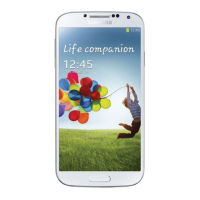
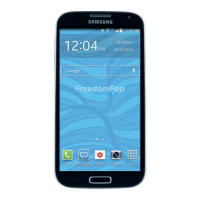
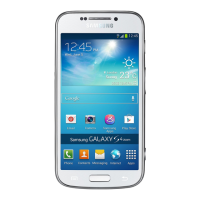
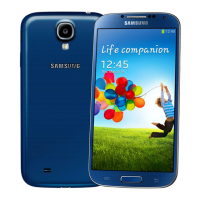
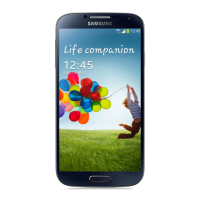
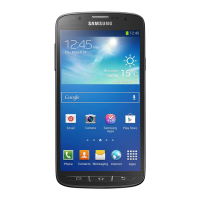



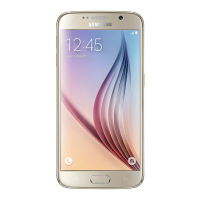
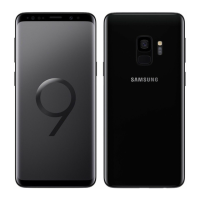
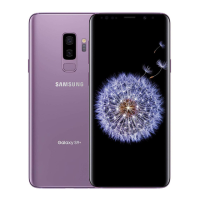
